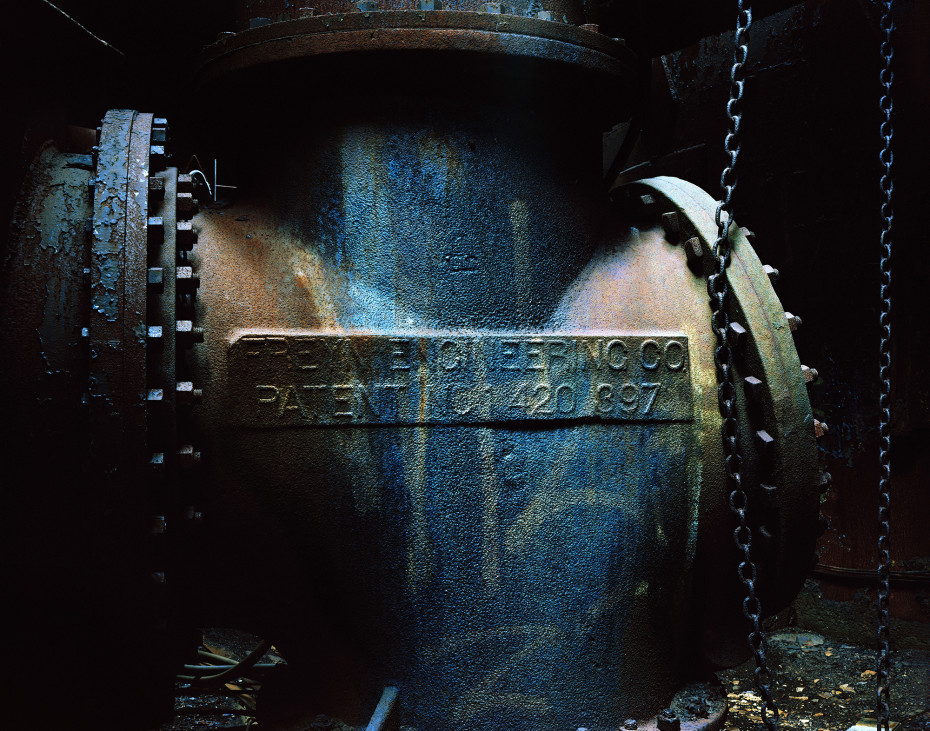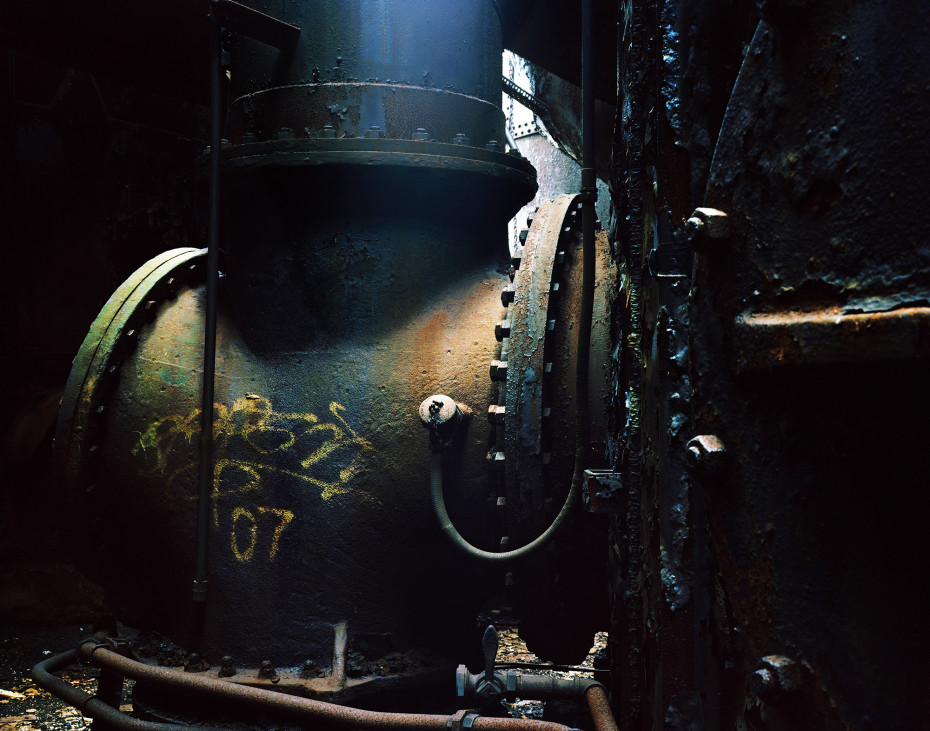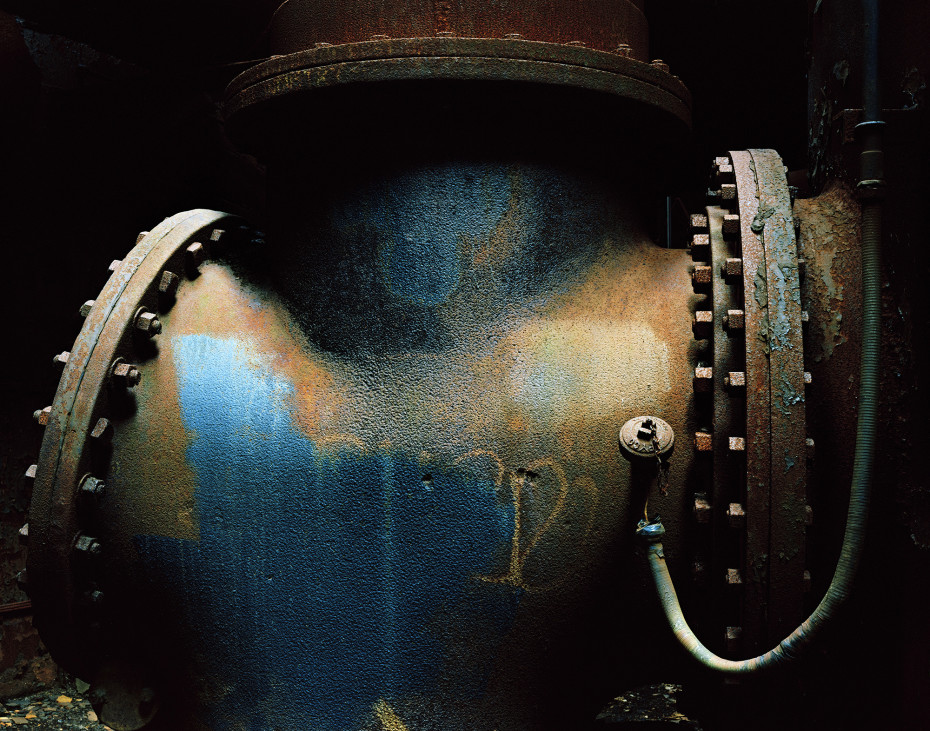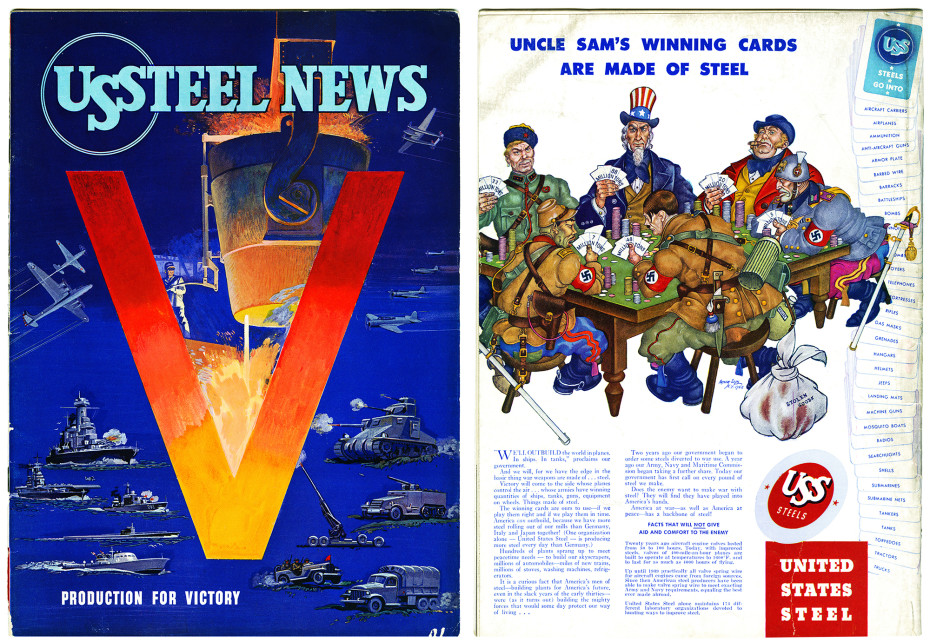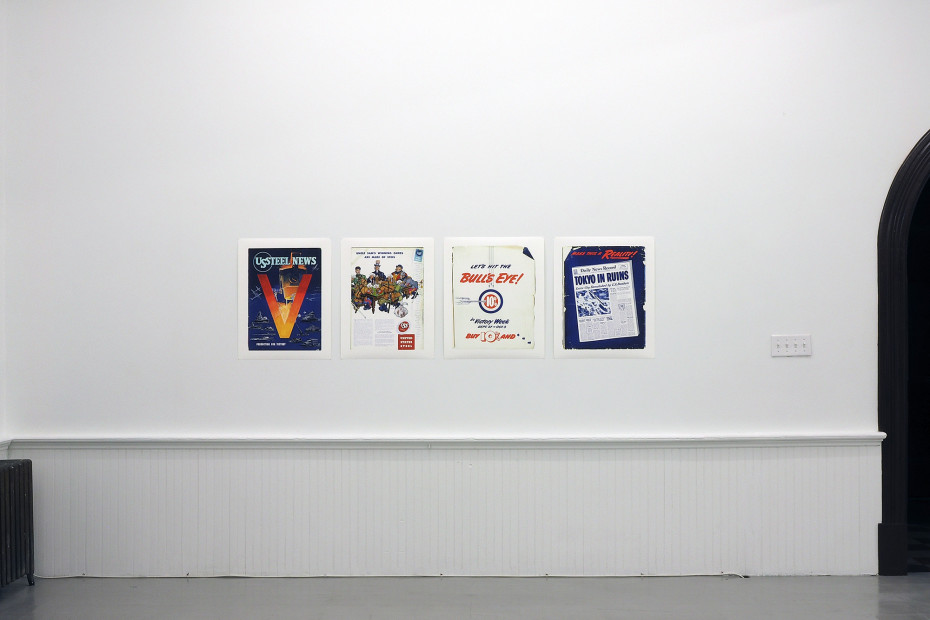Like A Body Without Skin
In the early 1980s German artists Hilla and Bernd Becher, as part of their on going documentation of declining industries, photographed extensively in Pennsylvania, particularly the many blast furnaces and other steel related industries that lined Pittsburgh’s river ways. They described the blast furnace as “like a body without skin. Its insides are visible from the outside; organs, arteries and skeleton creates its form”[1]. Taking part of the Becher’s description as its title, this series addresses the relationships between steel manufacturing industries and their mobilisation into a united national front that produced everything from planes to bombs during WWII. The focus here concerns not so much the role steel manufacturing has in America’s WWII ideologically driven narratives, but rather how these manifest in the present, meaning how the remnants of these industries might operate as a form of memorial to a historical past that is still lived today. Accordingly, Like a Body Without Skin brings together archival imagery with present-day photographing/filming of Carrie Furnace, a former blast furnace in Rankin, Pittsburgh. The residues of this site are positioned with a voice recording that describes the affects of the 1945 WWII incendiary-bombing of Tokyo, where civilians were reduced to ‘bodies without skin’ due to the intensity of fire produced from the steel clad cluster munitions. These remnants – of both the site of Carrie Furnace and the recorded narrative – work together to destablise sanctioned historical, ideological and political discourses associated with how the Asia Pacific Theatre of WWII is memorialised, remembered, narrated and imaged. Specifically, the photographed objects consist of ‘cold blast stoves’ whose job in steel manufacturing was to control the airflow that literally fuelled the furnace’s fire. Through these photographs, these objects take on a bodily appearance, through their pock-marked, scarred skin-like surface and their shapes: they behave as ‘memory objects’ for past bodily warfare traumas. By bringing together the site of Carrie Furnace with WWII traumas, this series aims to visualise an ethical entangling of sites that although physically remote are historically related, while also grappling with how to imagine potential futures that essentially challenge the continued presence of a defining past.
[1] Becher, Hilla and Bernd. Blast Furnaces, MIT Press Massachusetts, 1990.
Series Information
- Year: 2015/16
- Dimension: all prints variable dimensions
- Medium: Photography


